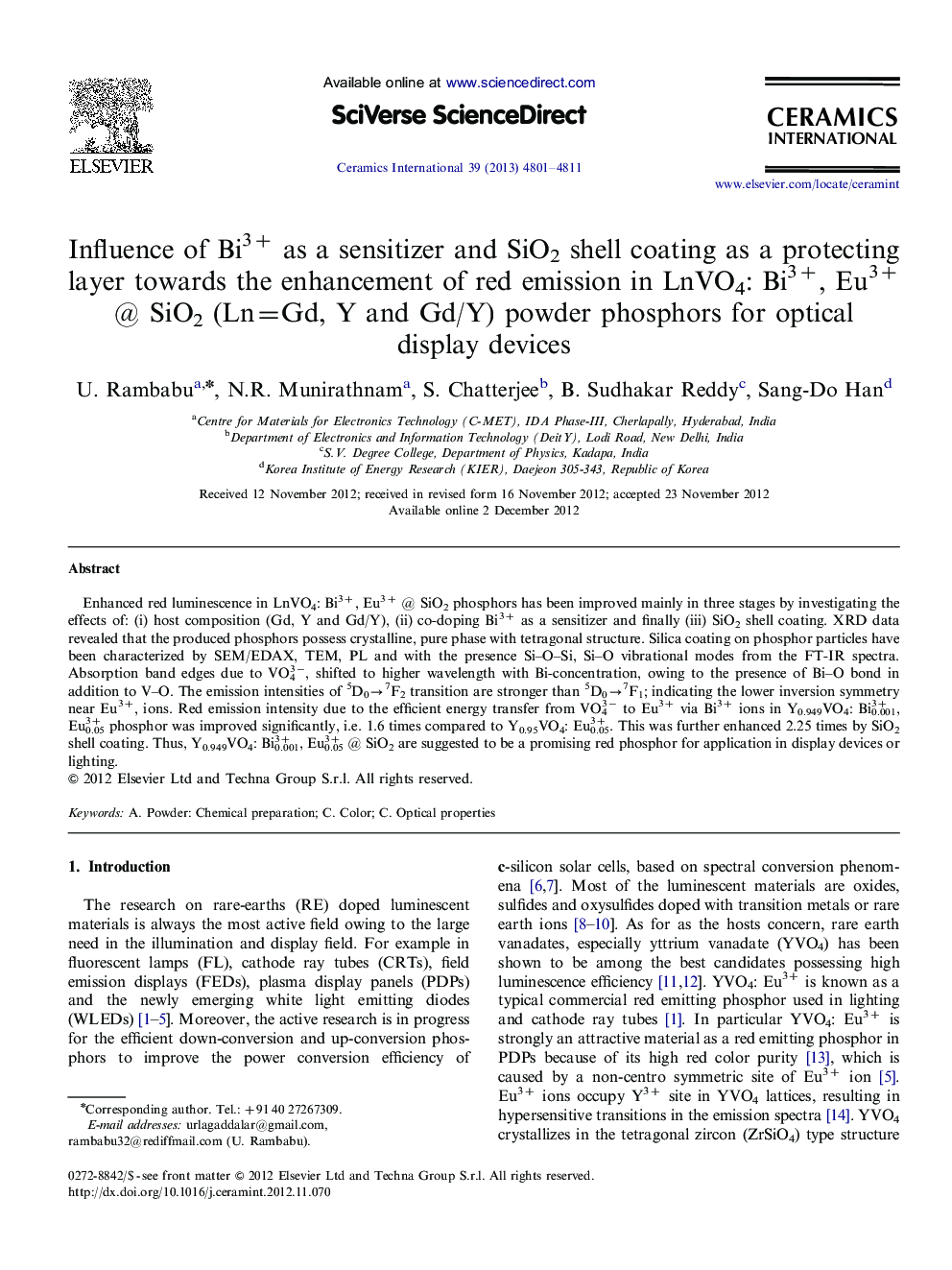| Article ID | Journal | Published Year | Pages | File Type |
|---|---|---|---|---|
| 1463077 | Ceramics International | 2013 | 11 Pages |
Enhanced red luminescence in LnVO4: Bi3+, Eu3+ @ SiO2 phosphors has been improved mainly in three stages by investigating the effects of: (i) host composition (Gd, Y and Gd/Y), (ii) co-doping Bi3+ as a sensitizer and finally (iii) SiO2 shell coating. XRD data revealed that the produced phosphors possess crystalline, pure phase with tetragonal structure. Silica coating on phosphor particles have been characterized by SEM/EDAX, TEM, PL and with the presence Si–O–Si, Si–O vibrational modes from the FT-IR spectra. Absorption band edges due to VO43−, shifted to higher wavelength with Bi-concentration, owing to the presence of Bi–O bond in addition to V–O. The emission intensities of 5D0→7F2 transition are stronger than 5D0→7F1; indicating the lower inversion symmetry near Eu3+, ions. Red emission intensity due to the efficient energy transfer from VO43− to Eu3+ via Bi3+ ions in Y0.949VO4: Bi3+0.001, Eu3+0.05 phosphor was improved significantly, i.e. 1.6 times compared to Y0.95VO4: Eu3+0.05. This was further enhanced 2.25 times by SiO2 shell coating. Thus, Y0.949VO4: Bi3+0.001, Eu3+0.05 @ SiO2 are suggested to be a promising red phosphor for application in display devices or lighting.
